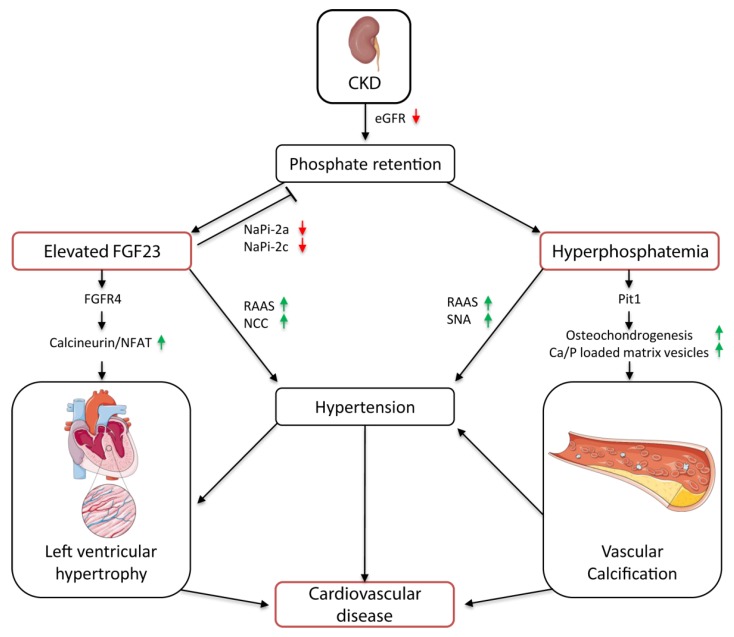Figure 1.
Cardiovascular pathomechanisms of elevated FGF23 and hyperphosphatemia in chronic kidney disease (CKD). The phosphate excretion attenuates with declining kidney function. Resulting FGF23 elevation counteracts the phosphate retention by downregulating NaPi-2a/c in the kidney, but also directly promotes LVH via FGFR4–calcineruin–NFAT signaling. FGF23 induces hypertension by activation of the RAAS and NCC expression. Hyperphosphatemia stimulates the osteochondrogenic differentiation and release of Ca/P loaded vesicles in VSMCs via Pit-1, and thereby induces VC. Phosphate-induced vascular calcification (VC) together with activation of the RAAS and SNA contribute to the development of hypertension. eGFR, estimated glomerulus filtration rate; NaPi-2a/c, type IIa/c sodium-dependent phosphate transporter; FGFR4, fibroblast growth factor receptor 4; NFAT, nuclear factor of activated T-cells; RAAS, renin-angiotensin-aldosterone system; NCC, Na+Cl− co-transporter; SNA, sympathetic nerve system; VC, vascular calcification.

